In late 2016 I purchased an existing Shopify store, in today’s post I am going to provide an update of how the last month went with the site. If you want to get more details, read about how I purchased the Shopify site, why I bought it, how much it cost, and more.
This post will go into more detail on the things that have happened over the past 6 months, and then look ahead to what the next steps for the site will be. The website carries products that have demand year round, but the summer is a time when there is a size-able spike in demand for certain products on the website. With this in mind April through June was when my business began investing more time in this project. My goal with this post is to allow you to follow along with my journey of buying an existing Shopify store and see how the results turn out.
This store that I will be sharing results on is only a small portion of my business. This particular website is operated by one member of my team. The majority of my business is currently selling on Amazon, so this website is one form of diversification. The point of sharing this is that if this site was my primary focus then I would likely see better results faster.
June 2017 Financial Results
With that intro, let’s dive into some numbers. Here’s a look at the total sales for June of 2017 that shows the breakdown by day:
and here’s one with a bit more detail:
The difference between the 2 is that technically 5 of the orders during the month were not directly from the online store. I am using an app that allows me to send custom invoices directly to customers for products that they expressed interest in but did not initially purchase. There were 5 orders from this app that show up in the 2nd screenshot that aren’t in the top one.
Now, here’s some stats on the visitors to the site for June of 2017:
and more importantly, stats on how well these visitors converted into sales:
This report shows how many visitors added products to cart, reached the checkout page, and then actually dropped off along the way. The goal will be to get all of these percentages to increase, especially the number that drop off from adding to cart compared to actually completing their purchases.
Next up, I will share the income statement for the month of June for this website:
Here’s a look at some of the results from a few of the Facebook ads that I have running:
You can see that a few of these are typically pretty solid, and a few are quite expensive. On the low end my margin on products are right around $10 per unit, so I’m willing to spend up to that amount in ads to have a customer make a first time purchase. The reason for this is that they can buy a product that has higher margin, they can potentially buy multiple products, and they will then be on the email list to potentially buy additional products in the future. In addition to the Facebook ads, I also have ads running through Google, and through Reddit. As I get analytics dialed in, I will be able to better calculate exactly how much I should be spending on ads.
Speaking of the email list, here’s a look at the growth of this website’s email list over the last 30 days. Mailchimp doesn’t have the option to filter by specific dates, but this closely approximates what happened in June as well:
I am very happy with this number. With 594 new email subscribers and 4,261 unique visitors, that means north of 13% of visitors to the website are opting in to the email list. Properly utilized, this should be very valuable for the future for both this website, and launching any complementary sites in the future.
Overall, I am pretty happy with how the month of June went for this project. This was the highest sales month yet for the website, including when it was owned by someone else.
The majority of the work on this site is being done by a member of my team who helps with a variety of projects in my business. This project he works on at least 10-15 hours per week, and I do not track it separately currently. I am able to put plans in place and then have him execute upon those plans. With his wages factored in it would take a significant bite out of the net profit number that is shown above. It would still be profitable, but not by a ton based on this month alone. If I was doing all the work on the site, which would be very doable, then the full amount of the net profit shown above would be mine.
I am perfectly fine with this as it allows me to continue to work on the areas that are producing the most income, and still test out new things. Essentially I am willing to have this project run at about break even initially as long as it’s increasing the value of the overall site. The reason for this is that one of the potential exit strategies for this website is to sell the website.
Most websites sell for around 24 times the average monthly profit. On the smaller sites, and even some of the larger ones, the valuation is based on the owner investing time in the business. Based on this metric, the net profit amount above would stand as is. If I was able to maintain this level of net profit for 1 year, then the site would be worth around $32,300 without factoring in the value of the inventory. At this level, I would see a very size-able return on my initial investment all while having a member of my team do the majority of the heavy lifting.
So while the sales for this particular site are less than 1.5% of my businesses overall monthly sales, it still allows for a nice payday in the event of selling the site. I still think it has a lot of room to grow, and if it does the payoff for selling the site gets higher and higher. The way I look at it is that every additional $1,000 of monthly profit should yield an additional $24,000 if the site is sold. I am also learning a lot of things that will be very beneficial for the future and can be applied to additional projects.
That’s a brief recap of where things are at, and what we’ve been working on with the site. In terms of next steps that I need to get completed:
- Launch some of the products on Amazon. I plan on doing this within the next month.
- Optimize conversion rates and setup better conversion tracking on all ad spend.
- Testing out upsells.
- Dialing in email marketing to maximize the value of each subscriber.
- Working out partnerships with local companies to sell these products wholesale and distributed via other channels.
That’s a quick rundown on how things are going with the Shopify Store experiment. There are definitely things I could have covered in more detail, but I wanted to keep the post a reasonable length. I’m happy to go into more detail in the comments. Please let me know in the comments below what questions you have on anything I covered in this post, or related to this project.

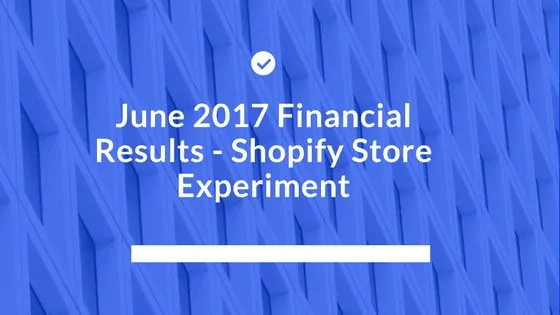

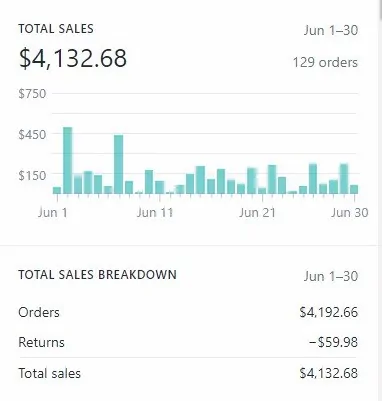
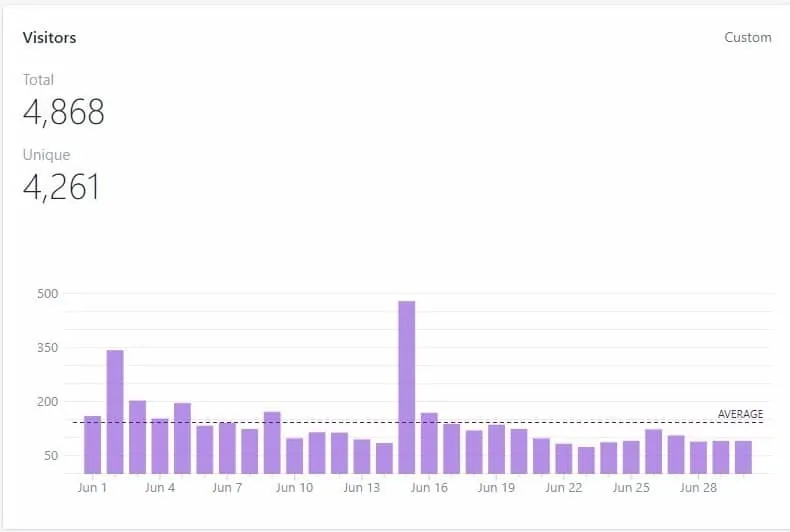

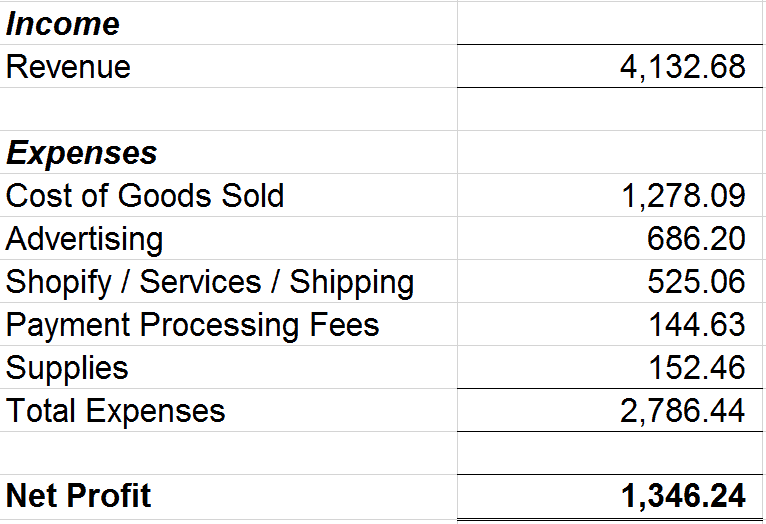

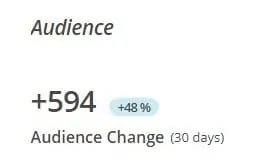
I tried downloading amazon seller app so i can use it t check prices in stores like walmart and others but it looks like i’ll need to download the app, put in my account details and pay inorder to use that feature. Do you know of any other free apps i can use to compare prices? Paying for amazon seller account before i figure out what to sell there doesn’t make sense right?
Hi Ife,
You need to sign up for an individual seller account, then it’s free to use the Amazon Seller App. Scroll part way down on this page, and you should see the option to sign up as an individual: https://services.amazon.com/selling/faq.html
Best Regards,
Ryan
Hi Ryan
In Your shopify store , do you sell any kind of products or did you choose an specific nice. I wonder if its necessary a niche of product in order to have traffic in the webpage?
Hi Rolando,
My products are in a specific niche, and I do think that this is very valuable for helping to drive traffic to the store.
Best Regards,
Ryan
Hello Ryan. In your answer to Felipe you mentioned a ‘prep center’or ‘prep company’. Would you please be clear on what exactly or who exactly would do that and how to find them?
Hi Frank,
A prep center / prep company is a form of a 3rd party logistics company. Essentially you have items you are buying from a supplier that you want to send to Amazon. The items need a certain amount of prep work do to be done to meet Amazon’s requirements. Rather than having the items sent directly to you, you can can send them to a “prep center” and then they will take care of the prep requirements and send them to Amazon for you in return for a fee.
In terms of finding one, I would google, “Amazon FBA Prep Center” and similar terms and see what you are able to find. I don’t use any personally at this time, otherwise I’d likely be able to provide a recommendation.
Best Regards,
Ryan
This is what I sent to Shopify Customer Service this week:
I am active on Amazon w/my company. I sell on Amazon FBA, Amazon Merch, and Amazon Merchant Fulfilled (MF). When an order is placed on Amazon MF, it is also somehow being automatically cross transferred to my Shopify website as an order. Thus, I am building up a number of orders I fulfilled on Amazon MF and which are also listed as an Open Order on .myshopify. I have been ignoring this but, recently I decided to try deleting these orders on Shopify which can only be fulfilled on Amazon. I deleted 2 recent MF book orders. This information was automatically transferred to Amazon and both customers were issued an instant refund which is about $20 out of my pocket. The books had been mailed earlier and should be in the hands of the customers shortly. So, I can see this really causing great problems as these orders continue to be unfulfilled by Shopify while all ready fulfilled on Amazon MF. This is a slow time, but business will pick up in late August and this could really clog the system. Most of my MF items are books, but some are items like toys which are obviously stocked at substantial levels for instant shipment. Now you know my problem. Are you all ready aware of it? Is these some way to stop the backflow of order information from Amazon that was never intended for Shopify?
And this was the response:
The way our integration with Amazon works is that when orders are placed by customers on Amazon, they will sync with Shopify automatically, appearing on your Orders page. You need to fulfill the orders through Shopify, which updates them both on Amazon and Shopify. Fulfilling through Amazon directly will cause the issue you’re experiencing.
We have a guide explaining how order sync works which should help clarify how the integration functions.
If you do not wish the Shopify and Amazon accounts to be linked, you can disconnect them through your Amazon channel account page.
If I misunderstood your question Larry, please let me know, and I’ll be happy to take another look or offer other resources/advice 🙂
Cheers,
So beware! I have disconnected the channel between Amazon and Shopify.
Hi Larry,
Thanks for sharing that. I don’t yet have my accounts connected so haven’t run into that, but I will keep tabs on that when I link them.
Best Regards,
Ryan
Hey Ryan,
Thanks for being so generous with your sharing of legit info.
It’s hard to come by on the interweb.
That said, could you share some of the “due diligence” questions you wished you had asked –
and further research you would do if you knew then what you know now . . .
I – having been burnt several times with online courses – always thought flippa and the like were the “wild west” – operating outside of any legit jurisdiction – and a real caveat emptor” district, where most claims were unverifiable.
I read about all these “click farms” where people work all day – providing fake likes ( and news – lol) and providing fake reviews.
I certainly admire your guts in lahying out over 6K for a site – seems like you will make it work.
Thanks in advance.
Bill
hello – again,
Funny how hitting the send button stimulates one’s thinking.
IMHO, there’s probably a course in there somewhere – how to buy virtual fixer-uppers and flip for a profit.
Bill
Hi Bill,
You’re probably right, that does sound like a good idea for a course / further content.
Best Regards,
Ryan
Hey Bill,
Glad you enjoyed the info in the post.
I will add the due diligence on buying an existing website to my list of future blog post. Flippa is definitely a bit of the wild west, but I still think there’s real opportunities mixed in.
Best Regards,
Ryan
Nice update,I was wondering what had happened to this store. Back when you bought it, it looked like you were second guessing the decision. Glad to see things are working out.
Ryan,I see that your coaching program is open. I’m a Brazilian online seller who is thinking about international expansion to other markets through FBA.
Do you think there is still room for beginners on amazon US? The market over there seems a little saturated …
Also, do you think it’s possible to run an amazon fba US business completely remote? I already have a LLC setup in the US, and could get bureaucratic details out of the way, what I mean by that is how difficult the day to day operation could be. Do anything that requires your physical presence comes up eventually?
Hi Felipe,
Glad you enjoyed the update!
My coaching program is currently only for US clients.
I do still think there is room for beginners in the US. It’s not necessarily as easy as it once was to get started, but overall I think there’s still a lot of opportunity. In terms of running a business entirely remotely, I would say this is possible with the right pieces in place. All you would really need is a prep center or a prep company who can handle shipping your products to FBA warehouses. There might be some other one off issues that come up, but I think it would be possible to sell on the US platform without every actually being in the US.
Best Regards,
Ryan
Hi Ryan,
When you mention a team member running the site, is that an inhouse person or someone overseas?
Hi Mike,
This is an in house team member.
Best Regards,
Ryan
great post as always Ryan. How did you fulfill the shopify store orders? direct from your warehouse, dropship from supplier, &/or did you utilize FBA/AZ multichannel order function? Thanks!
Hi Stephen,
The orders are all fulfilled from my warehouse currently. The team member mentioned in the post handles shipping all of the orders for me.
Best Regards,
Ryan
Great update! Were you able to integrate FBA into it as originally planned? Was that an easy thing to do? Is the business becoming more “touchless” as a result? Where in the profit model are those fees represented?
Thanks!
Glad you enjoyed it Frank. I haven’t set up the shipping with FBA just yet. The shipping of all orders is handled by my team member, so it’s still touch-less for me, but the goal is still to get most products integrated with Amazon’s fulfillment.
Best Regards,
Ryan